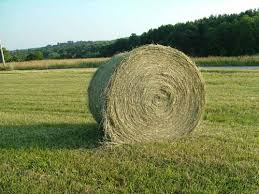2020 Southeast U.S. Hay Harvest Survey
go.ncsu.edu/readext?651616
en Español / em Português
El inglés es el idioma de control de esta página. En la medida en que haya algún conflicto entre la traducción al inglés y la traducción, el inglés prevalece.
Al hacer clic en el enlace de traducción se activa un servicio de traducción gratuito para convertir la página al español. Al igual que con cualquier traducción por Internet, la conversión no es sensible al contexto y puede que no traduzca el texto en su significado original. NC State Extension no garantiza la exactitud del texto traducido. Por favor, tenga en cuenta que algunas aplicaciones y/o servicios pueden no funcionar como se espera cuando se traducen.
Português
Inglês é o idioma de controle desta página. Na medida que haja algum conflito entre o texto original em Inglês e a tradução, o Inglês prevalece.
Ao clicar no link de tradução, um serviço gratuito de tradução será ativado para converter a página para o Português. Como em qualquer tradução pela internet, a conversão não é sensivel ao contexto e pode não ocorrer a tradução para o significado orginal. O serviço de Extensão da Carolina do Norte (NC State Extension) não garante a exatidão do texto traduzido. Por favor, observe que algumas funções ou serviços podem não funcionar como esperado após a tradução.
English
English is the controlling language of this page. To the extent there is any conflict between the English text and the translation, English controls.
Clicking on the translation link activates a free translation service to convert the page to Spanish. As with any Internet translation, the conversion is not context-sensitive and may not translate the text to its original meaning. NC State Extension does not guarantee the accuracy of the translated text. Please note that some applications and/or services may not function as expected when translated.
Collapse ▲ Extension forage specialists with the University of Arkansas Division of Agriculture and in the Southeast U.S. would like your help in gathering information on hay harvest methods and time required for harvesting hay to help develop more effective forage educational programs.
Extension forage specialists with the University of Arkansas Division of Agriculture and in the Southeast U.S. would like your help in gathering information on hay harvest methods and time required for harvesting hay to help develop more effective forage educational programs.
We would appreciate you taking the time to complete a survey regarding your hay harvest methods. If you do choose to participate, we appreciate your feedback and all information will be kept confidential to the extent allowed by applicable State and Federal law. By completing the survey, you are agreeing to allow the use of your responses for educational purposes. If you do not wish to complete the survey, your refusal to do so will have not any effect on your relationship with the University of Arkansas System Division of Agriculture. To opt out of taking the survey, simply do not complete the survey.
If you have questions or concerns about this study, you may contact John Jennings at (501) 671-2350 or by email at jjennings@uaex.edu. For questions or concerns about your rights as a research participant, please contact Ro Windwalker, the University’s IRB Coordinator, at (479) 575-2208 or by e-mail at irb@uark.edu.
Information gathered from the survey will provide direct insights into current hay harvest practices, and allow us to better develop forage educational programs. Additionally, the information provided will be used to prioritize research and Extension outreach efforts moving forward to more effectively address your needs.
Please click on the link below to access the survey. It should take approximately 10 minutes to complete.
Southeast U.S. Hay Harvest Survey
Thank you for taking the time to complete the survey, and we look forward to your insightful responses.




